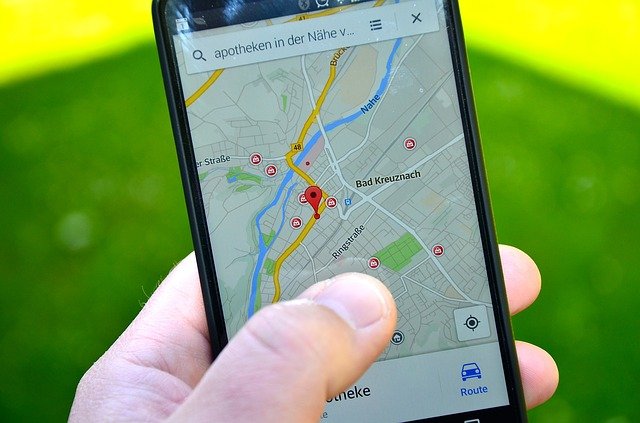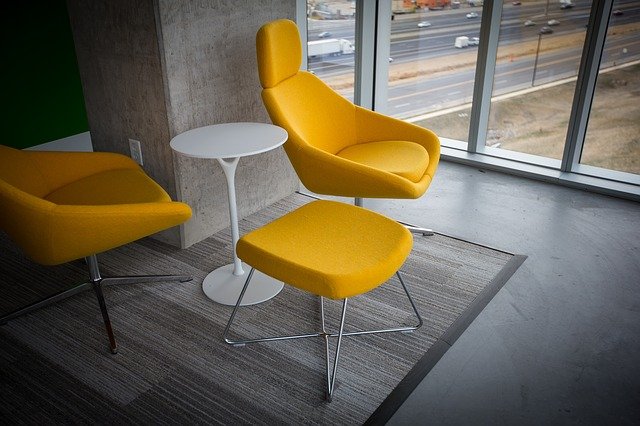With freelancing and self-employment on the rise throughout the world, it’s no surprise that co-working spaces are similarly gaining in popularity. Providing a convenient, cost-effective alternative to owning and managing an office, members can enjoy a professional working environment, without any of the hassle. But what makes one co-working space stand out from the rest? With most places providing a desk or cubicle, free Wi-Fi, and often also free coffee – why are some offices just more popular than others?
Here are 7 factors that, done well, can help your co-working space beat the competition:
1) Location

Members will often choose a space that’s close to their home, or gym. That’s something you have limited control over. But there’s much more to location than that. Security and convenience are also key factors. For example, how close is the nearest car park (and how well lit is it)? How safe is the street at night? How close to a motorway access are you? Is it gridlock-hell trying to get to and from your location? Are you close to public transport? Are you near a shopping centre so members can pop out and get a few things while on break? Are you near a park?
Many co-working spaces rent a floor in the nearest office block, and trust that if you build it, people will come. But there’s a reason your members have opted out of working in a traditional office. Consider alternatives that boost the creative or unexpected factor in your space. You could convert a gallery or artist workshop instead, and set up in the equivalent of your city’s Art Mile. Or spruce up a warehouse near a farmers’ market, where fresh produce and interesting homemade wares add a homely touch. Converting old residential buildings and cottages also give your space more interesting layout and design options.
2) Service and support

Despite the importance of location, make no mistake, you’re not in the real estate business. You’re in the hospitality business. So, like other hospitality industries, your staff must always be on hand, and well trained. They should be able to strike that delicate balance between being ready to help, and unobtrusive.
From the receptionist, to the catering and cleaning staff, to IT support, to the security guard – these are all ambassadors for your space. So, make sure they’re always welcoming and professional.
And always ensure that your members know who’s around to help. If the printer runs out of ink, members should feel confident that someone will get it sorted out in the next 10 minutes. Similarly if they’re struggling to work the audio visual setup in the conference room. Or if they need more hand towels in the bathroom. Or if they’ve forgotten the combination to their locker.
Your space should perform the function of an office, but offer the service of a high-end hotel. So, ensure your members always have plenty of support.
3) Other members

Chances are, potential members checked you out before signing up. And one of the major selling points (or drawbacks) of your space is your other members. Although people will hail from diverse industries, and be working on their own projects, once they’re all settled into your space, they form a community. Which means each new member contributes to the community and its distinct character.
Many co-working spaces have no entrance policy, and encourage anyone to join. Others have an informal interview process or require a motivational statement. Still others rely on Community Guidelines to ensure a congenial atmosphere. Regardless of which option you’ve chosen, remember that having just one obnoxious person in the mix may be enough to put other members off.
It goes without saying that any form of sexism, racism, bullying, or intimidation should be unacceptable in your space, and the offending individual should be swiftly removed. After all, as a private business, you have the right to restrict admission. And as a conscientious company, you are responsible for the well-being of your members.
4) Networking opportunities

Having checked out your co-working space, and being convinced that it’s filled with lovely, talented, friendly people, your members will naturally want to get to know one another. After all, what better opportunity to brainstorm with new people, find new collaborators and clients, and generally network, than your space? But many people would not feel comfortable tapping a stranger on the shoulder and striking up a conversation. In fact, despite the high number of potential contacts, most individuals only manage to talk to a small group of people. Lack of community could account for the high churn rate among many co-working spaces. This is why it’s important for you to facilitate the process of networking.
Having communal areas that encourage members to relax and socialise together is the first step. Whether you have a café or restaurant on-site, chill out areas, patios and gardens, or a workout room, creating areas where members can gather and get to know one another is crucial. If your members wanted to be isolated in their cubicles all day, they would have just worked from home.
You can also actively encourage networking. For example, by creating a Kalido network for your co-working space, and inviting members to join. Network members can see each other’s profile, including skills and interests, and common contacts. Knowing a little something about someone makes it easier to strike up a conversation. Knowing someone’s skills also opens up opportunities for hiring and collaboration. The dream team your members are looking for could be compiled from the people sitting a couple of feet from them – but they’d never know without a way to make everyone’s skills transparent.
The Nearby feature tells network members when other members are around, so even if someone has hidden themself away in a cubicle, their friends can pleasantly surprise them. The introduction and referral features also help members find people that have been vetted by people they already know and trust. And the free chat and call features make communication and coordinating a breeze.
If your members hardly exchange a word with each other, and see the desks as the most valuable part of your space – you’re doing it wrong.
5) Perks

Most spaces include coffee in their membership. But are you offering barista-brewed beans freshly ground this morning, instead of instant sachets? Does your space include lunch or a snack or salad bar? Do you host interesting talks or silent yoga on Thursdays? Do you have members showcase their work at Poetry or Short Story Nights?
At its core, a co-working space is a place with desks, Wi-Fi, and conference facilities. But the experience of your space can be what distinguishes you from the rest. So, rather than seeing your job as done after you’ve checked the last printer cartridge, think about what else you could be offering. As we discussed above, your space creates a community. So, how do you make membership in the community more rewarding?
6) Flexible packages

Most co-working spaces offer a day rate, or membership packages for a week, a month, or more. This is very similar to the system used by gyms. But unlike gyms, very few co-working spaces offer flexibility beyond the basic package system.
Consider giving members the option of freezing their contract. For example, if someone will be out of town for a week, let them use the rest of their month membership when they get back. Or give them the option of transferring the rest of their package to a friend (free publicity for you). Many freelancers also go through flush/bust cycles, with some months being better than others in terms of income. Offer payment holidays to see them through hard times. They’ll be grateful for the space to work, and can make up the difference when they’re economically stable again.
Money being such a sensitive subject – the more flexibility you can offer your members, the more loyal they’ll be to your space.
7) Comfort

Repurposed swings might look fun and kooky, but how much time can you really spend on them before you get dizzy? At the end of the day, functionality beats design, because people have to work.
Your members are spending hours in your space. So, ensure that tables and chairs are matched to be the right height. Ensure that power points are widely available. Ensure that there is good lighting and ventilation. And above all else, ensure that the noise level is controlled. This means the coffee bar or cafeteria might have to be on another floor. Or a certain section of cubicles should be soundproofed. Or conference room audio systems don’t boom across the entire space.
As a co-working space, you’re not a working space. You’re a living space that is conducive to work. So, strike the right balance between comfort and functionality.
With co-working spaces popping up all over the place, you might be concerned about competition. But that’s the wrong way to look at things. More places popping up means there’s a demand for co-working spaces. And as long as yours offers something special, you’ll be the place satisfying that demand. Remember that a significant number of your members will be freelancers or entrepreneurs, which means their appetite for risk and excitement is higher than average. So, give them something to get excited about, and make your place stand out from the rest.

